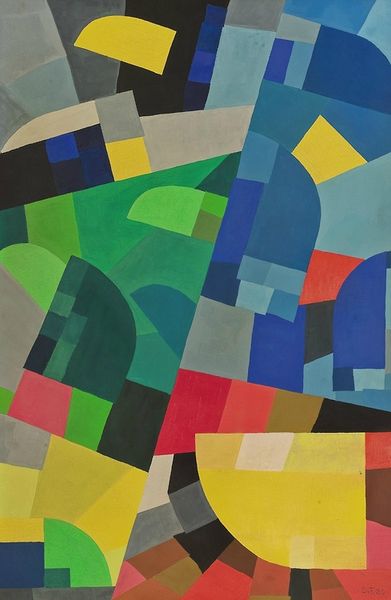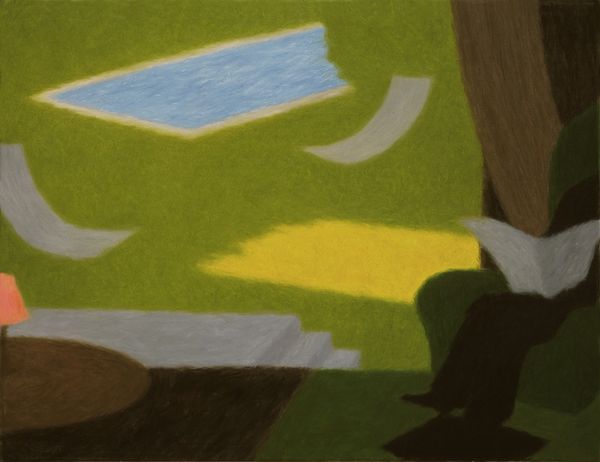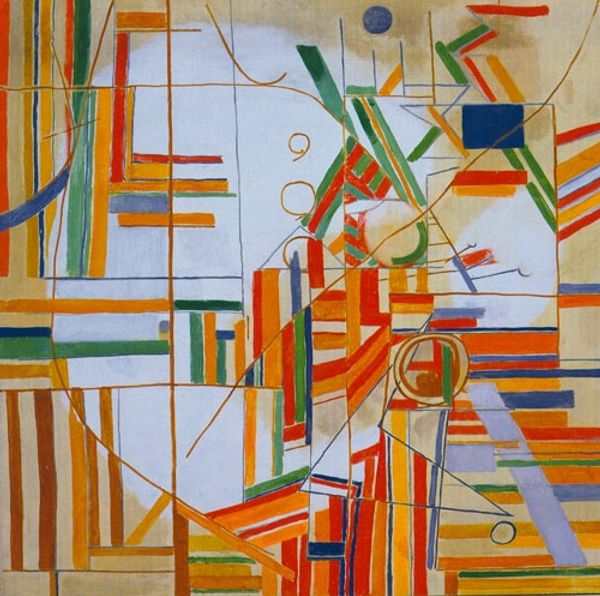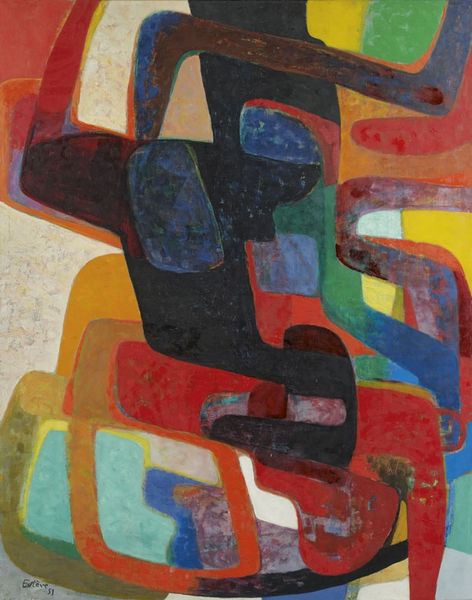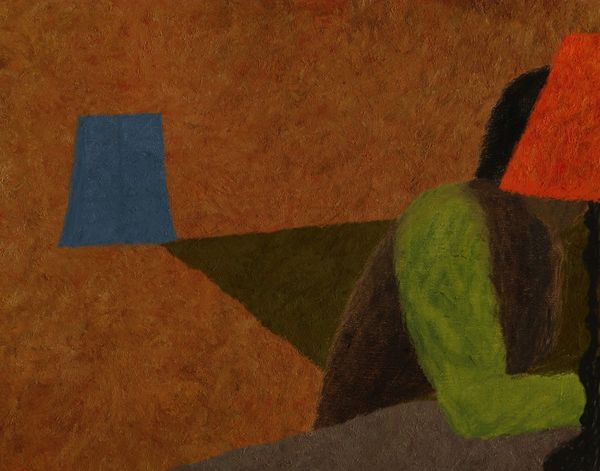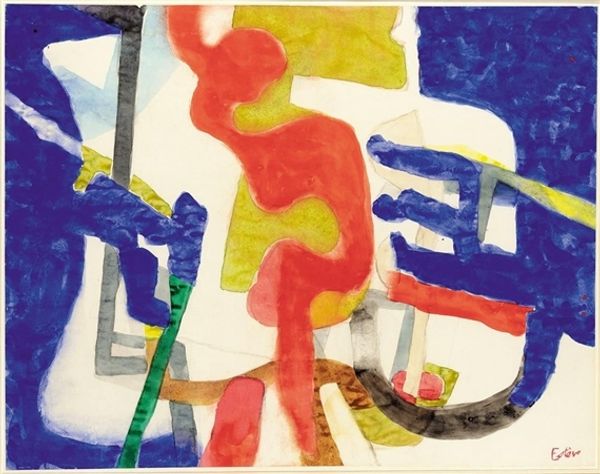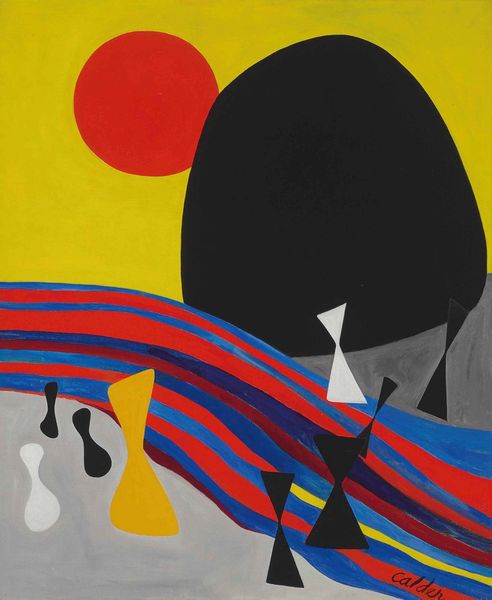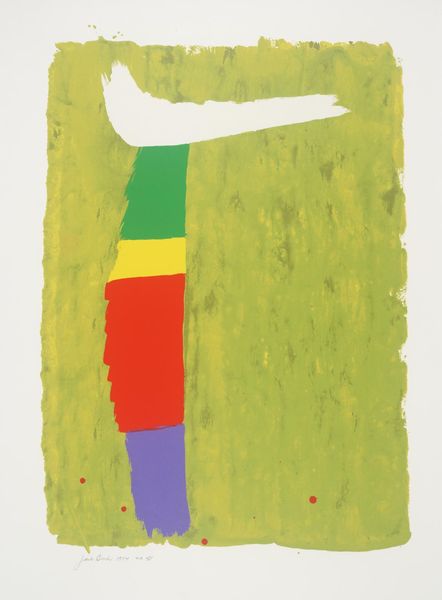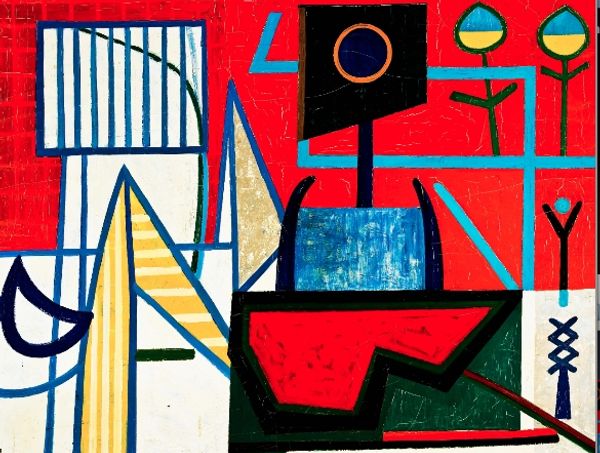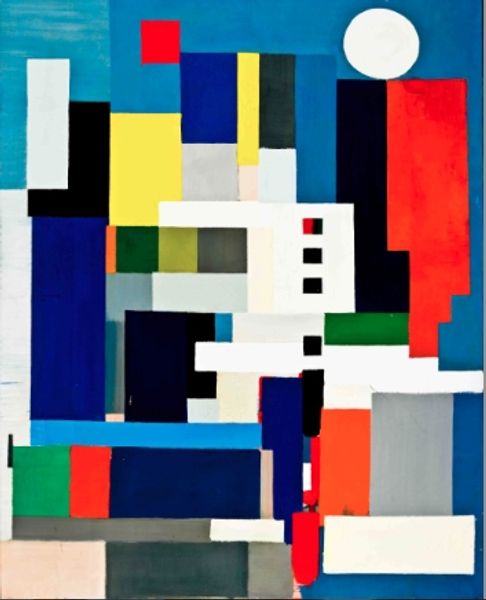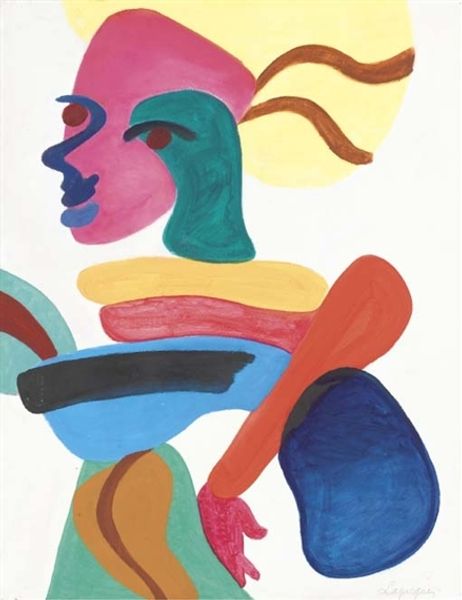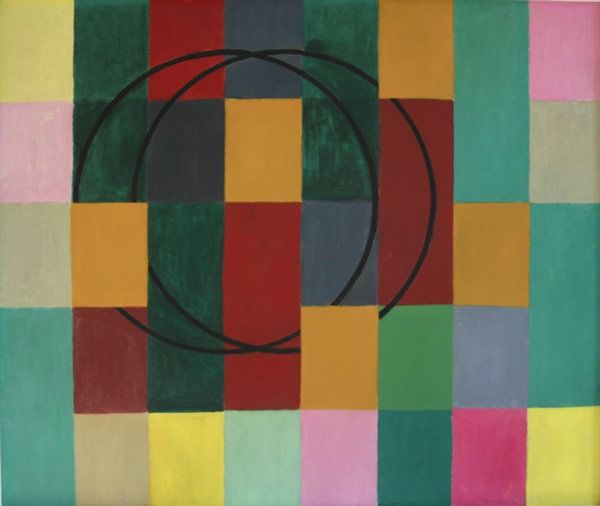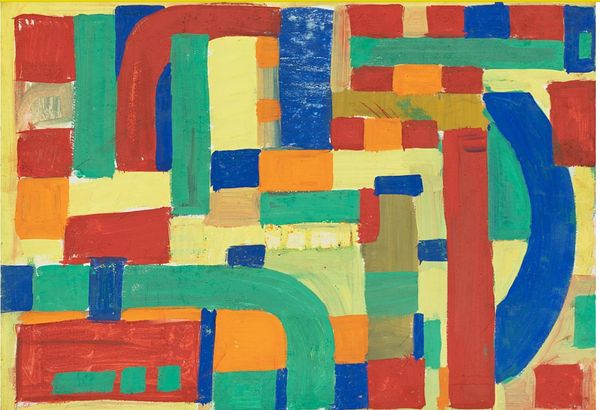
Copyright: Public Domain
Curator: “Person in Front,” created by Heinrich Hoerle in 1932. This drawing, currently housed in the Städel Museum, presents a fascinating study in form and color. Editor: It’s interesting, the figure is very geometric. It feels a little unsettling, though – isolating even. The back of the head is so prominent and stylized against the almost whimsical landscape behind. What stands out to you when you look at it? Curator: The stark contrast between the organic forms of the trees and the rigidly structured grid background immediately commands attention. Note how the artist uses color – the warm yellows and greens versus the cooler blues – to further delineate these contrasting elements. Editor: So, the tension is the point? Curator: Precisely. Hoerle masterfully manipulates our perception through the formal elements. The split coloring of the figure's clothing introduces another layer of visual dissonance, don’t you think? How does this division impact your reading of the piece? Editor: It does make it more unnerving. It gives it a sense of duality, like two halves that don’t quite fit. Curator: Indeed. One could even interpret the geometric abstraction not as mere representation, but as a visual metaphor for societal fragmentation, a prevalent theme within the Expressionist movement. Editor: That makes a lot of sense. I was so caught up in the colors, I didn't fully appreciate how the geometry is part of a larger message. Curator: And therein lies the beauty of formal analysis: unlocking deeper meaning through close observation of artistic technique. Editor: Right, analyzing the structure allows a closer look into a lot of layers! Thank you.
Comments
stadelmuseum about 2 years ago
⋮
Heinrich Hoerle, who died at an early age, was one of the Cologne Progressives, a group of artists who turned against bourgeois-capitalist society in the 1920s and early 1930s, but also distanced themselves from the social criticism of New Objectivity. Its founding members – Heinrich Hoerle, Franz Wilhelm Seiwert, and Gerd Arntz – wanted to change society and therefore opted for a reduced, clear language of form which, in its simplicity and unambiguity, was intended to be generally understandable.The drawing “Vordermann” (literally, the man or person in front) by Heinrich Hoerle is also based on this principle. We see the brightly coloured back of the head of a male figure, the titular “man in front”. Hoerle rendered him as a type-like abbreviation and geometric abstraction – broken down into luminous colour surfaces, just as the composition as a whole, including the landscape with trees in the background, is composed of individual colourful segments of form that are colour-coordinated and richly structured. Hoerle, who, as a self-taught artist, demonstrated a great passion for experimentation throughout his life, discovered wax crayons for himself around 1931/32, which he applied in some segments in long, drawn-out lines, in others with dashed, then again in circular movements, and into the layers of which he scratched in various ways in order to expose the colour tones or the paper underneath. All this lends the drawing, which is, in principle, so strictly constructed, a surprisingly haptic and, above all, lively effect – despite its primarily surface-bound nature. In his own unique way, Hoerle incorporated influences from Pittura Metafisica, Cubism, and Constructivism.
Join the conversation
Join millions of artists and users on Artera today and experience the ultimate creative platform.
